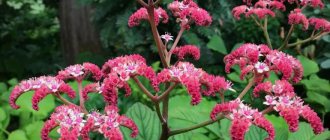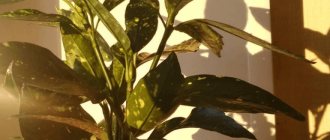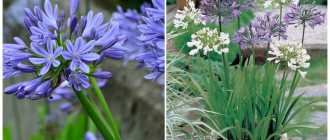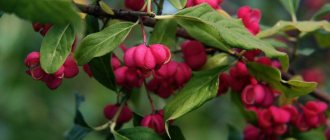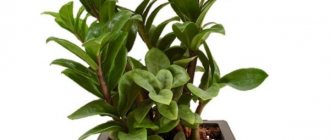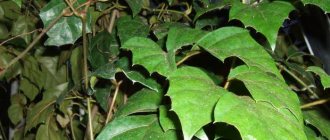Appearance and characteristic features of pennisetum foxtail
Pennisetum alopecuroides belongs to the large family of Cereals. This herbaceous plant invariably attracts the eye with its abundant paniculate inflorescences. The height of a fairly wide bush ranges from 0.5 to 1 m. The leaf blades are narrow, bright green, and in winter they turn yellow-golden.
Pennisetum foxtail is distinguished by decorative spikelets
Even in winter, the plant retains its decorative appearance as long as the tender shoots are not damaged by snow. It is Pennisetum foxtail that exhibits the greatest frost resistance among other species of this plant.
Abundant inflorescences-spikelets of a brownish color, appearing on the tops of arched or straight shoots, give the plant a resemblance to a flowing fountain.
For reference! The foxtail or foxtail is the most common species of pinnately bristleweed, growing in warm to temperate climates.
Pennisetum shelter for the winter
The culture is thermophilic, but many representatives are adapted to temperate climate conditions. Some species are cultivated as annuals; they can also be grown in flowerpots and brought indoors for wintering. Frost-resistant species successfully winter in open ground. With the onset of autumn, you should collect the stems in bunches, tie them, and cover them with spruce branches.
In the spring, prune so that the plant awakens and begins to grow. Another shelter option: cut the stems at the root in the fall, mulch with dry bark, peat or fallen leaves. You can also transplant it into a pot and store it indoors until spring.
If the winters in your region are harsh, the bush will decrease in size every year. After 2-3 years it will need to be replaced with a new one.
Varieties of pennisetum and their characteristics
Hydrangea Vanilla Fraze - planting and care in open ground
The most popular among flower growers are the following varieties and varieties of pennisetum:
- Pennisetum setaceum. Under natural conditions it grows in the African tropics and subtropics, in Arabia. Since this species is quite heat-loving, in climate conditions of mid-latitudes it is grown as an annual plant. The bush can reach a height of 0.7 to 1.3 m. The leaves are narrow and flat, and the paniculate spikelets are loose and drooping. The inflorescences are colored either pink or purple. The variety got its name due to the presence of feathery bristles covering the spikelets. Flowering occurs in the second half of summer.
- Pennisetum glau. This variety is also called pearl millet. It is distinguished by burgundy narrow leaves. Dense dense bushes of the plant can reach a height of 2 m. The flowering period occurs from July to September.
- Pennisetum villosum. The inflorescences of this variety are distinguished by fluffy airy spikelets. Compared to other tall-growing varieties, pennisetum shaggy is quite short - it grows only 50-60 cm. For the climatic conditions of the middle zone, this heat-loving variety is not suitable - it will simply freeze. Therefore, here it can only be grown in containers. But in the southern regions the plant feels excellent.
- Pennisetum orientale. In natural conditions, this species prefers rocky soil, mountain slopes and hills. Its maximum height can be 0.7-0.8 m. The leaves of the variety are folded lengthwise, fluffy inflorescences-spikelets of pink-violet color have long, rough bristles. The variety is very heat-loving, so it is not suitable for cold climate zones.
- Pennisetum simple (Pennisetum incomptum). This frost-resistant variety is not as colorful during flowering as other varieties. However, due to its unpretentiousness, early flowering period and fairly high growth (about 1-1.2 m), the simple pennisetum is also popular among gardeners. It blooms already in June and pleases the eye with its spikelets until September-October.
- Pennisetum rubrum. This variety is distinguished by its purple foliage, which looks especially bright against the background of green herbaceous plants and shrubs.
Pennisetum does not tolerate frost well
Varieties of pennisetum pinnately with photos and names
Pennisetum Hameln Pennisetum alopecuroides 'Hameln'
Pennisetum alopecuroides 'Hameln' photo
Pennisetum Hameln is one of the most popular varieties of foxtail pinnate. It is distinguished by the unusual gray-ash color of the spikelets with a slight beige tint, the bristles are thick, long and fluffy, the spikelets are elongated in comparison with ordinary varieties. Flowering from late summer to late autumn. The height of the bush is from 30 to 60 cm. It is a perennial and requires shelter for the winter. Resistant to diseases and pests. It is best planted in spring; it tolerates later plantings in summer and autumn, but requires more careful protection from freezing.
Pennisetum Red Head pennisetum Red Head
Pennisetum Red Head pennisetum Red Head photo
Smoky purple spikelets cover the spherical bush in abundance. Blooms for a long time, throughout August and September. The bush is from 40 cm to 1 m high. Winter hardiness is average - zone 5, withstands frosts down to -26 ° C. Suitable for growing in the middle zone, it winters well even in snowless winters under cover of spruce branches.
Pennisetum purple Princess Molly Pennisetum Purpureum
Pennisetum purple Princess Molly Princess Molly Pennisetum Purpureum photo
Pennisetum purpurea is decorative all season long: the stunning colors of the leaves make it stand out from other crops. Planted with green ground covers, other grasses or garden flowers.
Pennisetum moudry pennisetum alopecuroides moudry
Pennisetum alopecuroides moudry photo
The Maudri variety is loved for its thick, large, fluffy spikelets of a pinkish-purple hue with a slight smoky tint, which cover the bush in abundance. The height of the bush is from 60 to 90 cm, it blooms throughout June and July. The leaves are wide, light green, collected in a spherical rosette. Requires shelter for the winter.
Pennisetum Purple Baron pennisetum Purple Baron
Pennisetum Purple Baron pennisetum Purple Baron photo
Purple Baron is a cultivar of Pennisetum glaucosa. A very powerful bush, reaches 0.7-1.1 m in height. Blooms for a long time, from July to September. The spikelets are long, up to 20-30 cm, densely pubescent, ruby-purple in color with a whitish coating at the tips. The dark green wide leaves have a purple bloom, and the shoots themselves are the same color. It grows green mass very quickly and produces many side shoots. Does not require careful care, does not suffer from anything. For the winter, it is recommended to dig it up and keep it in a container in a cool, bright room.
Pennisetum rubrum Pennisetum setaceum rubrum 'Dwarf Red'
Pennisetum rubrum Pennisetum setaceum rubrum 'Dwarf Red' photo
This variety of Pennisetum purpurea has a ruby red and purple hue. The spikelets are lightened, beige-ruby-purple. The shape of the bush is round, the leaves are thin and dense. Requires shelter for the winter.
Pennisetum viridescens 'Black Beauty'
Pennisetum viridescens 'Black Beauty' photo
Pennisetum viridescens 'Black Beauty' captivates with its amazing beauty: black-purple spikelets scatter radially from an armful of thin, dense leaves of a rich green color. Winter hardiness zone 6a, can withstand frosts down to -23°C without shelter. The height of the bush with inflorescences reaches 80 cm, leaves - up to 60 cm. By the end of summer, the leaves receive a black-violet coating, and in the fall they acquire a golden-brown hue. Flowering lasts throughout August and September.
Pennisetum Ornamental Millet pennisetum ornamental millet
Pennisetum Ornamental Millet pennisetum ornamental millet photo
A very beautiful series of varieties of glaucous pinnately bristle. The height of the bush is 0.8-1 meter, it grows up to 40 cm in width. Planted at a distance of 25-40 cm. It blooms from late spring to autumn. Prefers partial shade.
Features of caring for pennisetum in the garden
Tree hydrangea - planting and care in open ground
The main feature of the penis is its heat-loving nature. Therefore, in mid-latitude conditions, the plant can only be grown as an annual plant. And varieties more resistant to frost will be able to winter in open ground only with additional shelter and in warm winter conditions. This should definitely be remembered when growing this crop.
Important! Pennisetum leaftail reacts very painfully to drafts and sharp gusts of wind, so it is better to plant the plant near buildings or fences that will serve as protection.
Also, do not replant it too often - the plant does not tolerate the procedure well.
Watering
You should not water the pennisetum flower too often: the plant in natural conditions is more accustomed to drought than to excess moisture in the soil.
The best option would be to irrigate in the absence of natural precipitation, keeping the soil moist and preventing moisture stagnation.
The soil
This cereal is not particularly demanding on the composition of the soil. Only the frequency of feeding will depend on its quality. The most important condition for successful cultivation of crops is regular weeding and loosening of the soil.
Feeding
If the plant is planted in rich, nutritious soil, then it will be possible to do without fertilizers.
But on poor soils, to obtain a more decorative appearance, it is better to use liquid complex fertilizers. This needs to be done once a month.
Attention! It is better to apply mineral fertilizers to moist soil after watering or rain.
Problems when growing pennisetum, diseases and pests
Although pennisetum is resistant to diseases and pests, cases of shrub death are not uncommon, so the plant is carefully monitored and problems are eliminated as they arise.
| Symptom | Cause | Elimination methods |
| The stem rots, the bush withers. | Watering too often. | Reduce moisture or stop it completely before the onset of drought. |
| The leaves turn yellow and fall off. | The soil is dry. | Watering is organized 2 times a week for a month, then the standard is restored if the shrub needs it. |
| The plant does not recover after wintering. | The winter is too cold. | The next time, pennisetum is grown in a pot or tub, which is moved indoors at the end of October for the whole winter until the beginning of May. |
| Dark spots on leaves. | Disease: rust. Excessive moisture. | Spray with fungicides. Replant the bush into new soil. |
| Small voids appear on the leaves and stem. Yellow or red spots appear, shoots die. | Shield. | They use a solution of soap and alcohol, fern tincture and chemicals such as Permethrin, Bi 58, Phosfamide, Methylmercaptophos. |
| Small green insects appear throughout the bush. The stems and leaves wither, the pennisetum dies. | Aphid. | Increase the frequency of watering, treat the flower with a soap solution or tincture of lemon zest. Special intestinal preparations (Intavir, Actofit) are best suited for pest control. |
| The plant is covered with a thin web, and orange circles are visible on the back of the leaf. | Spider mite. | Moisten the bush generously and cover it with polyethylene for several days. Treat with Neoron, Omite, Fitoverm for one month according to the instructions. |
| Small beige pests on leaves, inflorescences and stems. White coating and waxy deposits. | Mealybug. | Remove growths and affected parts of the plant. Treat the soil with an alcohol solution and remove parasites. Aktara, Mospilan, Aktellik, Calypso are excellent for wrestling. |
Features of caring for pennisetum in winter
Oakleaf hydrangea - winter-hardy varieties, planting and care
Wintering pennisetum, especially its heat-loving varieties, is a dangerous business. A tender plant dies if there is insufficient shelter or severe frosts. Therefore, it is left to winter in the open ground only in mild climates and the root part must be insulated.
Pennisetum needs light and warmth
In cooler winters, the plant is grown as an annual. They also practice planting in containers so that with the onset of cold weather it is possible to move the cereal plant to a warm and bright room.
On the issue of insulating plants overwintering in open soil, the opinions of gardeners differ. Some insist that the above-ground part should be cut off at the root and the root system should be insulated using spruce branches, leaves or covering material.
Other gardeners, on the contrary, believe that cutting off shoots for the winter is not worth it, since they will serve as a natural protection against freezing. You just need to cover the shoots with spruce branches or leaves, and last year’s branches can only be removed in the spring.
Pennisetum shelter for the winter
Amaranth: growing from seeds, types and varieties
The culture is thermophilic, but many representatives are adapted to temperate climate conditions. Some species are cultivated as annuals; they can also be grown in flowerpots and brought indoors for wintering. Frost-resistant species successfully winter in open ground. With the onset of autumn, you should collect the stems in bunches, tie them, and cover them with spruce branches.
In the spring, prune so that the plant awakens and begins to grow. Another shelter option: cut the stems at the root in the fall, mulch with dry bark, peat or fallen leaves. You can also transplant it into a pot and store it indoors until spring.
If the winters in your region are harsh, the bush will decrease in size every year. After 2-3 years it will need to be replaced with a new one.
Propagation by seeds
Pennisetum is propagated using seeds in open ground in mid- to late spring, when the soil has warmed up sufficiently and the threat of night frosts has passed. Since the seeds are quite small, there is no need to deepen them: it will be enough to walk on top with a rake and moisten the soil.
After the shoots appear, they must be thinned out so that there is at least 0.8 m of distance between neighboring plants. To obtain earlier flowering, it is recommended to germinate the seeds in greenhouse conditions and plant them in open ground as seedlings.
The attractiveness of pennisetum bushes lasts until the end of the season.
Soil preparation
The description of the preparatory work required by the soil comes down to careful digging and loosening of the soil.
Note! Pennisetum does not tolerate excess moisture well, so when planting it, you should avoid areas with close groundwater - this can have a detrimental effect on this cereal.
Planting in open ground
Onions: types and varieties with descriptions
Bushes grown in a warm room are planted in the ground after the onset of heat. To make them adapt faster, they are hardened 2 weeks before planting by exposing them to the air for half an hour.
When to plant
Pennisetum foxtail is planted in open ground after the threat of frost has passed. In the southern regions this may be the end of April, in the northern regions - mid-May. By this time, the seedlings usually reach a height of 10-15 centimeters.
Selecting a location
In nature, pennisetum grows in hot climates, so choose a planting site that is well lit by the sun. The plant does not make great demands on the composition of the soil, the main thing is that it is not too moist.
Planting scheme
Since pennisetum is capable of growing strongly, the distance between bushes is maintained in the range of 50-90 centimeters. Dense planting is needed if the plant needs to be used as a hedge. The depth of the planting hole is determined so that the seedlings have enough space to develop roots.
Advice! If the plant is not planned to spread throughout the area, the planting area is fenced with slate, digging it to a depth of 50 centimeters.
Reproduction by dividing the bush
The propagation method by dividing the bush is used when breeding perennial varietal plants, since propagation by seeds does not make it possible to preserve all the characteristics of the parent plant.
Propagation by division is combined with planting an old bush, the middle of which becomes not very attractive over time.
The bush should be divided no more often than once every 5-6 years. To do this, the dug plant is carefully separated. The side divisions are planted as independent plants, and the middle of the bush is destroyed.
The easiest way to propagate pennisetum is by dividing the bush.
How to care
Even perennial varieties of pinnate bristle, which are considered frost-resistant, still need to be protected for the winter. It is best to cover the roots with foliage and spruce branches, and postpone pruning the above-ground parts until spring.
If the soil is too dense, then before planting it should be loosened well, and in the summer, pennisetum should be periodically fed with complex fertilizers.
Since heat-loving varieties cannot survive winter in open ground, they can be preserved by planting them in pots. In winter, they are simply sheltered from frost in a fairly warm room until spring.
After winter, plants need pruning. At the beginning of spring, cut off the crown of the cirrus bristle plant to the width of your palm and fertilize it. This treatment is necessary to stimulate the awakening and forcing of new shoots.
If the bush is already old, it should be divided.
Many varieties of pennisetum are successfully sown by self-seeding. This must be monitored by removing excess growth in the fall.
Perennial cirrus bristles need feeding twice a year; they need soil rich in humus and sufficiently permeable to water.
There is no need to worry about diseases and pests that affect the cirrus bristle, there are very few of them. But old bushes need care. They begin to die from old age, so they are dug up and the center is removed, after which only the strong outer parts of the plant are planted.
The use of pennisetum in landscape design
Pennisetum is used in a variety of landscape design options. It can often be found in mixborders, along the edges of flower beds, along fences and near houses. The plant also looks great on lawns, rockeries and alpine slides. Tall pennisetum bushes look quite impressive in single plantings near garden and park trees.
Pennisetum foxtail provides a colorful backdrop for flowering shrubs and herbaceous plants. Its fluffy abundant inflorescences bending towards the ground sway when the wind blows and resemble streams of water.
Pennisetum looks impressive in group plantings
It is also possible to create beautiful rocky compositions in which the pennisetum plays the role of a large plant accent. You can also supplement a similar composition with plants characteristic of mountainous areas (juvenile, chistets, stone rose, lavender).
Pennisetum foxtail is a herbaceous plant with colorful spikelets of inflorescences. Thanks to the arched shoots bending to the ground and abundant flowering, this grass is often called fountain grass, since its shoots really resemble gushing streams of water.
Pennisetum foxtail exhibits the greatest winter hardiness among other varieties and varieties. However, in the conditions of the middle zone it must be covered for the winter. Pennisetum foxtail is unpretentious, and planting and caring for it will not cause any difficulties even for novice gardeners.
Botanical description
Forming dense turf, pennisetums can reach a height of 15 to 130 cm. Their linear leaves are up to half a meter long and up to 5 mm wide, bright green in spring and summer and yellow in autumn, collected at the base. On straight bare stems, rough and covered with bristles only in the lower part, lush cylindrical or almost one-sided spike-shaped panicles of white, burgundy, greenish or pink color, from 3 to 35 cm long, are formed. The many fluffy bristles make the inflorescences attractive. Flowers in pennisetum spikes are of two types: underdeveloped staminate and lush bisexual. The shape of the pennisetum bush resembles a fountain, which is why it is often called fountain grass.
Pennisetum shelter for the winter
The culture is thermophilic, but many representatives are adapted to temperate climate conditions. Some species are cultivated as annuals; they can also be grown in flowerpots and brought indoors for wintering. Frost-resistant species successfully winter in open ground. With the onset of autumn, you should collect the stems in bunches, tie them, and cover them with spruce branches.
In the spring, prune so that the plant awakens and begins to grow. Another shelter option: cut the stems at the root in the fall, mulch with dry bark, peat or fallen leaves. You can also transplant it into a pot and store it indoors until spring.
If the winters in your region are harsh, the bush will decrease in size every year. After 2-3 years it will need to be replaced with a new one.
Varieties
The cirrus bristle genus is very diverse, with about 150 species. Only a few of them are most widespread.
Pennisetum simplex
This species is the most frost-resistant of all.
This pinnately bristlecone has powerful and very long roots, forming continuous thickets up to 120 centimeters in height. Its thin, greenish-gray, long leaves lie on the ground in a dense carpet. The grass begins to sprout from the beginning of June. Delicate green spikelets turn yellow with the beginning of autumn, acquiring a brownish tint.
Pennisetum simplex is very aggressive and survives any neighbors, growing on the site. Therefore, when growing this plant, it is necessary to strictly control its growth.
Pennisetum Gray
This type of pennisetum has very beautiful bronze leaves with a burgundy tint. Their width reaches 3.5 centimeters. Tall, erect, two-meter bushes form dense, dense thickets.
In mid-latitudes, this species of pinnately bristleweed is grown as a fast-growing annual. Pennisetum Gray blooms from July to September
This species is also represented by the Purple Majesty variety. This is a beautiful plant reaching a height of one and a half meters. Its leaves are very decorative, colored burgundy-brown, and the ears are dark purple.
The variety "Vertigo" is popular. It has wide, burgundy, brown-tinged leaves flowing down in a beautiful fountain.
Pennisetum foxtail
This species is perhaps the leader in popularity. In the wild, it inhabits the meadows of East Asia and Australia. This pinnately bristleweed grows into a lush bush with thin, bright green leaves. The height of the bush varies from 40 centimeters to a meter.
This is a low plant, ranging from 30 to 60 centimeters in height. The thin leaves of pennisetum are green with a grayish tint and form semicircular thickets.
With the beginning of September, it forms spike-shaped panicles of a whitish hue. Then the color of the panicles changes to pink or red-brown. The panicles grow up to 80 centimeters in height.
If the summer is not warm enough and the cirrus bristlecone lacks sunlight, then it does not set buds.
The most interesting representatives of this group:
The Hameln variety is very decorative, delicate, and grows slightly lower than the main variety. This is a fairly early variety.
Variety Compressum - grows up to 90 centimeters in height, frost-resistant. It has very decorative, reddish-brown panicles.
The Japonicum variety cannot survive in northern regions and requires a milder climate. The spikelets of the panicles of this variety have white tops, rising up to 80 centimeters on straight peduncles.
This type of pennisetum requires a lot of light. They are best planted in sunny places.
Pennisetum bristles
The habitat of Pennisetum bristles is the north of the African continent and the Arabian Peninsula. This is a fairly tall plant, growing up to 130 centimeters. It has long and thin leaves.
The leaves and stems are dark burgundy in color. The dark purple ears are up to 35 centimeters long and feel soft and fluffy to the touch.
This variety is heat-loving and does not tolerate low temperatures in winter; in our latitudes it must be grown as an annual crop.
Pennisetum shaggy
This variety of pennisetum grows on cliffs and rocky mountain slopes. It grows naturally in the east of the African continent. This is a small plant in height, about 60 centimeters. As it grows, pennisetum turns into a very dense bush with long and narrow leaves.
This picture is decorated with lush golden spikelets with long shaggy hairs on drooping, downward-curved stems.
Pennisetum blooms at the end of August and blooms for a whole month.
Pennisetum orientalis
This variety of pinnately bristleweed grows up to 80 centimeters in height. The habitat is Central Asia, Transcaucasia, Pakistan, India. Grows in the form of thickets on rocky slopes.
It has narrow, up to 4 mm, dark green leaves that sway very beautifully, like waves, in the wind. The plant's spikelets themselves are in the form of pink-violet panicles with pubescence.
Pennisetum transplant
Plant transplantation is carried out only for the purpose of rejuvenation and division of the bush for propagation. It is performed in the spring, when the threat of frost disappears. Pennisetum is carefully divided into parts and placed in pre-prepared places.
A drainage layer of fine expanded clay is placed in the planting holes, then the plant is placed, the root system is straightened and covered with a mixture of garden soil, compost and peat, lightly compacting the soil. After transplanting, the divisions are watered and carefully cared for until they take root in their new location.
Pennisetum flowering
The plant usually blooms from mid-summer to early autumn. The inflorescences are long, spike-shaped, pubescent with bristles. They can be beige, white, brownish and purple.
After the crop has flowered, seeds begin to form. To prevent pennisetum from scattering throughout the area, ripe spikelets should be removed. This procedure will not at all affect the decorative appearance of the plant, but will prevent self-seeding.
Distribution and habitats
Pennisetum is a heat-loving plant that needs to be warm and light. In its natural habitat, the homeland of pennisetum is the southern part of Africa. A large number of varieties of pennisetum are found in South America. You can meet certain species in India, Indochina, Burma, Pakistan, and the Arabian Peninsula.
We invite you to familiarize yourself with the structure of a cactus
Most species prefer to grow in subtropical and tropical areas. Cultivated species take root quite well in the temperate climate of the European Plain. So, you can find pennisetum in the southern regions of Russia, Ukraine, and Belarus. Some species grow in the Caucasus. In these areas, pinnate bristle is grown as an annual plant. Some perennials are covered and insulated for the winter with material that prevents the roots from freezing.
Pennisetum prefers to grow in open areas - fields, meadows. The plant is not afraid of drafts and winds. Prefers sunny or shaded places. The plant does not tolerate growing in the shade.
The cereal is demanding on lighting; the plant is not placed in the shade. A light lacy shadow from small trees is allowed.
Care
Caring for Pennisetum foxtail does not take much time and effort from the gardener during the season.
Watering
It is necessary to moisten the soil only if there is insufficient natural precipitation. In hot, dry summers, Pennisetum foxtail is watered once a week.
Loosening and weeding
While the bushes are small, the soil around them needs to be constantly loosened. During this procedure, air is supplied to the roots and they develop better. During this same period, weeding is necessary, otherwise the weeds will take away sunlight and moisture from the young bushes.
Top dressing
Pennisetum foxtail, planted in fertile soil, does not need to be fed for the first years. Adult bushes are fertilized in the spring with organic matter, for example, humus or manure. In summer, they are watered once a month with complex mineral fertilizer.
Diseases and pests
Pennisetum is rarely subject to pest invasion and disease formation. In too dry summers, spider mites may appear, which are easily washed off with a stream of water. Young plants can be favored by aphids, which are removed with a soap solution.
Trimming
There is no need to trim the stems of Pennisetum foxtail for the winter for several reasons:
- Dead wood prevents excessive moisture from the roots.
- Keeps kidneys from freezing.
- The site looks decorative not only in summer, but also in winter.
Only damaged leaves need to be cut off for the winter. In spring, the entire above-ground part is completely cut off so that young stems can develop.
Mulching
In order to retain moisture in the area where roots grow during hot summers, the bushes are mulched with peat, tree bark, and sawdust. In addition, mulch will protect the soil layer from forming a crust after rain or watering.
Preparing for winter
Before the onset of frost, the tree trunk circle is additionally sprinkled with dry leaves and covered with a special flooring. Another necessary procedure is to water the roots abundantly, since if the ground around them is moist, they are less damaged by frost. To prevent tall stems from bending under the pressure of snow in winter, they are tied with rope.
Popular varieties
Below are some of the most famous varieties that are in demand among gardeners.
Hamelin
This variety belongs to the deciduous varieties of Pennisetum. It has elongated spikelets of a lighter color. The leaves are narrow and rough to the touch.
Red Head
The shrub has a spherical shape, from the base of which many stems with smoky purple spikelets grow. The leaves are narrow, long, and their color is gray-green.
Purple Baron
This is one of the varieties of Pennisetum bluestem. The stems and leaves are green with a purple tinge. The long spikelets are ruby-purple in color and the tips are whitish.
Mowdry
The leaves of Pennisetum cultivar Maudry are adorned with pink-purple spikelets. The leaves are light green with purple spots. The bush grows up to 90 centimeters.
Rubrum
All parts of Rubrum bristly pennisetum are red-purple. When expanded, the paniculate inflorescences form a fountain-like shape.
Viridescence
The dense foliage is green at the beginning of the planting season, later turning purple. The panicles of Viridescence pennisetum are black-purple and slightly arched. The shrub grows to a height of 70 cm.
Ornamental
Pennisetum bluetongue Ornamental grows up to 1 meter tall and 40 centimeters wide. It has wide, blue-green leaves. The dense spines are purple in color.
Moudry
The basal rosette of Moudry pennisetum consists of green leaves and pink-orange spikelets. The inflorescences are large, fluffy and densely cover the bush.
Hamelin
Pennisetum limpidum Hamelin has narrow, green leaves that turn yellow in the fall. The spikelets are light cream or beige. Winters well.
Questions and answers
- We have quite harsh winters in our region, so I would like to know how realistic it is to grow such a heat-loving exotic plant as pennisetum?
For planting on the site, it is better to choose winter-hardy varieties, such as Viredescence and Foxtail. Beautiful lush bushes will delight not only with lush greenery, but also bloom. The main thing is to prepare the crop well for wintering. The leaves are left until spring rather than cut off in the fall. They will serve as a natural shelter for the root system. A layer of leaves is poured over them and around the bush and covered with spruce branches on top. In the spring, the plant is opened, the leaves are cut off, and the pennisetum will grow again.
- There are several types of pennisetum growing in the garden. All of them bloom beautifully every year, except for the Eastern one. What is the reason?
Pennisetium Eastern belongs to the more heat-loving varieties. Most likely the reason lies in the fact that he does not have enough warmth and sunny days. Therefore, if you need a flowering specimen, you will have to abandon this species.
- If I plant Pennisetum with seeds, will it bloom the same year?
In order for the bush to bloom in the summer, the seeds should be planted in February. It is better to plant seeds in small cups. Like many cereals, pennisetums do not respond well to transplantation, especially if the roots are exposed. Therefore, the sprouts are transplanted from the cups along with a lump of earth. This allows each specimen to quickly take root in a new place.
- What should you do to make the seeds germinate faster?
Pennisetum seeds just need to be pressed into the ground when planting. There is no need to sprinkle on top. At room temperature, seed germination will begin within a week. Then the sprouts are provided with lighting. The sprouts are planted in open ground when they reach 12-15 centimeters in height. This is usually the month of May.
Rate this post
Feather grass is beautiful
Heliopsis: description, planting, care and cultivation of the plant
Feather grass, like steppe grass, is loved by many: it is happily planted in mixborders or in clumps on the lawn. The delicate feather grass (Stipa pulcherrima) looks especially beautiful in plantings.
The unusual pubescence from a distance looks like the finest crystal threads enveloping the plant.
It grows no more than 80 cm in height, and its long thin awns reach a length of 50 cm.
Sources
- https://parazitof.ru/sornyaki/shhetinnik-i-osobennosti.html
- https://skanvordoff.ru/query/—–/%D1%80%D0%B0%D1%81%D1%82%D0%B5%D0%BD%D0%B8%D0%B5%20%D1% 80%D0%BE%D0%B4%D0%B0%20%D1%89%D0%B5%D1%82%D0%B8%D0%BD%D0%BD%D0%B8%D0%BA
- https://fb.ru/article/260607/schetinnik-zelenyiy-harakteristika-opisanie-metodyi-borbyi-s-sornyakom
- https://chto-posadit.ru/trava-shhetinnik-setariya-ili-mogar-vyrashhivanie-iz-semyan-posadka-i-uhod-v-otkrytom-grunte-foto-v-sadu/
- https://7dach.ru/SilVA/15-samyh-neobychnyh-dekorativnyh–zlakov-6492.html
Soil for pennisetum
The plant is quite demanding on soil, although some varieties also grow in depleted rocky soil. The soil for pennisetum should be fertile, containing humus and a small amount of peat and sand to ensure good water and breathability.
Carefully dug up garden soil mixed with peat and compost is suitable for the culture. Such an earth mixture will provide the young plant with the necessary nutrition and will not allow moisture to stagnate, which means the root system will be protected from rotting.
Description of the cereal plant Pennisetum
Fassen catnip: planting, care and use of the plant
Pennisetum is a genus of about 140 species native to Africa, Asia, Australia and Latin America, with some widely naturalized elsewhere. These are annual or perennial herbs. Many Pennisetums are ornamental grasses, for the most part forming dense turfs with neat tussocks of curved foliage, from which numerous fountains of paniculate inflorescences appear from mid to late summer.
Cirrus bristles looks beautiful in natural conditions
Varieties of cereal grass can be small or tall - up to 8 meters in height. The inflorescence is a very dense, narrow panicle containing tufts of spikelets interspersed with bristles, similar to long, showy hairs, which served as the basis for the name of the genus (translated from the Latin penna - “feather” and seta - “bristles”). The size of the leaves depends on the species of Cirrus. Most Pennisetum species are frost-resistant.
In Cirrus bristles, the spikelets remain on the stems throughout the winter. The yellow foliage of this grass can be a bright addition to the garden during the colder months.
